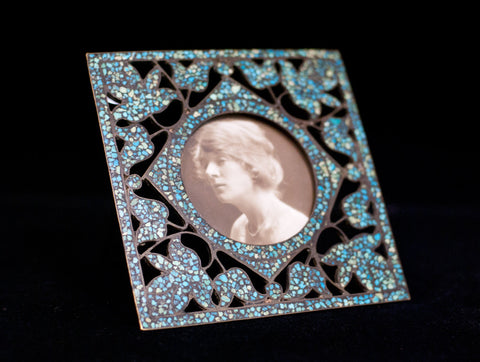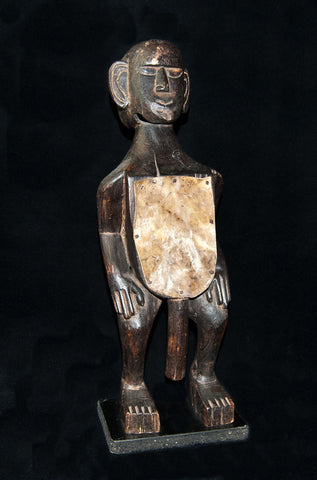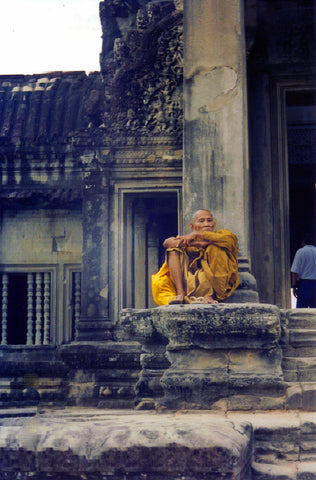Your Cart is Empty
Free Shipping for orders over $49 in Australia, $199 IN NEW ZEALAND/USA/CANADA AND $249 REST OF THE WORLD
Free Shipping for orders over $49 in Australia, $199 IN NEW ZEALAND/USA/CANADA AND $249 REST OF THE WORLD
Add description, images, menus and links to your mega menu
A column with no settings can be used as a spacer
Link to your collections, sales and even external links
Add up to five columns
Add description, images, menus and links to your mega menu
A column with no settings can be used as a spacer
Link to your collections, sales and even external links
Add up to five columns
Antique v's Vintage. What's it all About?
by Linda Heaphy May 22, 2017

Once common in India during the Raj period, pieces like this, an early 20th century Aglo Indian photo frame in bronze and turquoise, have appreciated considerably in value over the last 20 years as genuine Anglo Indian antiques become rare. Photo credit: Kashgar
By definition, an antique must be over 100 years old. Vintage is the term most commonly used to describe items that are younger than 100 years but are not new. Many of the items in Kashgar's collections fall into this latter category, but may still be regarded as "antique" in the sense of their comparative value.
Consider for example the life of a French 18th century ormolu occasional table and that of a Central Asian Tekke Turkoman sideboard. The French antique has likely spent its life being coddled and maintained in optimum environmental conditions, loving repaired by master craftsmen when necessary and used only in the most sparing of senses, perhaps to support a clock or ornament. Its pedigree is known as is its history of ownership. In comparison the Tekke piece cannot easily be aged. It has lived a hard life with a family of nomads, exposed to a harsh savanna environment during the family's annual migration and housed within a smoke-filled yurt at other times. It has been handed down from generation to generation within the family because wood is rare in this part of the world; repairs are always carried out locally or in the home. Decoration in the form of carving and paint may be added at various times according to the prevailing taste and modifications carried out as the family grows in size and their needs change. Eventually the family gives up it's nomadic lifestyle and settles in a town and the sideboard is sold to a dealer to help pay for the construction of a permanent house. From that point onwards its history is generally lost. It's described to future buyers only as "very old" and sometimes its specific geographic origins are forgotten. To the collector it is as valuable as the French table. However, without provenance the piece may not necessarily be considered an antique in the Western world. The upside of this is that tribal antiques are often much more affordable than their European counterparts. The downside is that they tend not to appreciate as quickly in value.
The same principal applies to textiles. Because of the wear and tear textiles naturally undergo, a cloth may be considered quite old at an age of twenty or thirty years. A textile in perfect condition is ideal, but old pieces that have been well loved and used may bring a deeper pleasure to the collector.
When buying ethnographic and tribal pieces for yourself, the first rule is to buy items that you love, that speak to you, that you will enjoy looking at (or wearing) every day. But if you are buying for a collection or to make a profit, prepare by learning and verifying as much information as you can. Visit museums and exhibitions, read relevant publications, articles and documents, and examine in person as many pieces as possible via dealers and private collectors. This will help you to develop your own knowledge base and range of experience. Don't be afraid to ask questions - dealers, curators and collectors are usually happy to share their hard-won information and knowledge. Watch the Antique Roadshow for a fascinating overview of antique collecting, and visit auction houses on viewing days when they are auctioning relevant collections (but do not bid for items until you feel you have the expertise to make an informed purchase). In terms of curating a collection that will increase in value, todays vintage pieces are tomorrow's antiques. Dogon pieces from west Africa, to give a classic example, were once tourist tat but are now values in the hundreds of thousands of dollars price range.
If you do your homework, collecting antiques and tribal artifacts can be an extremely rewarding experience. A piece is worth whatever someone is willing to pay for it, whether it is an exquisitely carved 17th century Italian statue or a crudely fashioned Tharu ancestral figure. Each has been equally cherished by their former makers and owners and each has a place in our modern world.

Makonde body mask, west Africa. West African tribal art has increased in value 100-fold since the 1960's. Photo credit: Kashgar
Collecting and Collections
A collection consists of a group of objects sharing a particular theme or basis of form, and may include such diverse examples as art, cars, Barbie dolls, headhunter curios, baseball cards, movie posters, coins, porcelain figures, jewellery or travel souvenirs. Often the rationale behind a collection is clear, however sometimes a collector will have no idea why they resonate with a particular kind of object. Here at Kashgar we once met a 7 year old boy who is a collector and maker of walking sticks; King Louis XVI of France collected and made iron locks (completely out of keeping with the perceived character of a king). Owning and augmenting a collection can give a deep sense of personal satisfaction and fulfil the need for order, acquisition and accomplishment at a very primal level.
Regarding the collectability of specific kinds of objects and the creation of a collection, the first thing to remember is that not every piece in your collection need be old. By the very act of "collecting", you are removing pieces from the cycle of creation, use and destruction, and preserving them for future generations to enjoy and admire. The age of the piece is often immaterial unless you are collecting within a specific period or time frame. Keep notes on where and when you bought an item and from whom, as well as any information about the piece available at the time of purchase. This information is known as the "provenance" of an item and will greatly increase your enjoyment of the collection and its future value.
When collecting, choose something that you like. There is no point in collecting teaspoons if you have no particular feeling for them. If your grandmother leaves you her prized assortment of post-industrial ceramic pigs that leaves you feeling cold, it's better to sell it off to someone who does want it and use the money to start up a collection of something you really like.
Finally, any collection is worth more as a collection. This may sound simplistic, however it is a basic tenant of collecting. Do not be tempted to sell off individual pieces, or at least consider selling in sets if you do.
The best place for purchasing, collecting and learning about ethnographic and tribal art and artifacts is through a gallery or store that specialises in such objects. With experience, real finds can be made at auctions and from garage and boot sales or privately sold items through newspapers or classified ads, but these are pleasures better left to the experienced. Museums are excellent resources for learning about art and increasing your appreciation and experience levels, as are books of al kinds. Destination traveling is another potentially rewarding source of original antiques, but remember that the world is full of fake artifacts and dishonest rug salesmen, and you also have to get the piece home and through Customs at the end of the day. Be prepared to make mistakes and remember if you love something, then its worth whatever you paid for it.

A Santal musical instrument doubles as a work of art. Late 19th century, hardwood, Himalayas. These items were common and inexpensive to buy as little as 10 years ago - since then they have become scarce and are appreciating rapidly in value.
Photo credit: Kashgar.
Leave a comment
Comments will be approved before showing up.
Articles
About the Author
- Linda has a Honours degree in Marine Biology and a PhD in Ecology from the University of NSW, Australia. She has travelled extensively and is a passionate writer on subjects as diverse as the role played by women throughout history, tribal communities and their customs, symbology and ethnology, talismans and their history. Occasionally she also writes about her travel experiences, her new life on a 25 acres in the Northern Rivers region of northern Australia and her black miniature poodle Phoenix. She is currently writing her first book on talismans.
About Us
-
The Kashgar Philosophy

Kashgar began through a love of travel.
In 1989 my father Bernard packed in his house painting business and set off for two years on a backpacking trek to the remotest corners of the world. When he finally arrived in the oasis city of Kashgar, China, he was so impressed with its history that he decided to start a new life collecting and selling exotic goods from all over the world. For 2000 years the legendary city of Kashgar was a melting pot of ideas and a key trading post on the historic Silk Road. It was this unique combination of philosophy and trade that my father wanted to recreate at home.
Starting in markets in 1991, he opened his first store in the Sydney suburb of Newtown in 1994. I gave up my own career as a government scientist to join him in 2000 and soon convinced my partner Ian to join us in what was to become the Family Business.
Today our version of Kashgar stocks a hugely diverse range of furniture, rugs, textiles, antiques, handicrafts and jewellery sourced from over twenty different countries including India, Nepal, Tibet, China, Thailand, Burma, Laos, the Philippines, Vietnam, Mexico, Peru, Turkey, Palestine, Syria, Afghanistan and Turkmenistan. Our collection includes contemporary and tribal silver and gold jewellery, a unique range of headhunting curios, antique Buddhist relics and a collection of one-off necklaces, earrings and bracelets that I design and create myself using the beads and jewellery making techniques of ethnic minorities from around the globe.
Kashgar is a philosophy as well as a store. We are committed to supporting traditional artisans and small village communities by selling authentic handcrafted goods which are personally collected by us. By supporting traditional methods of design and production we hope to encourage local cottage industries which have a low impact on the environment and help ethnic minorities maintain their self-sufficiency into the 21st Century. We are particularly committed to assisting women around the world and to this end have worked with several organisations including the Hua Bin Women's Union of Vietnam, the East Timorese Women's Association and Tikondane in Zambia. Time honoured means of craftsmanship and traditional ways of life are disappearing as people all over the world give up their identity in favour of jeans and T-shirts. We see our trade as a means of staving off the inevitable encroachment of the 21st century, assisting communities to decide for themselves which parts of the western world they wish to incorporate (medicine, education) and which they wish to reject (prostitution, drug production, begging and servitude to warlords). We encourage our customers to think of the handicrafts and artifacts they buy from us as an investment: a piece of history and a way of life that may soon be gone forever.
Kashgar has recently closed its retail outlet and gone completely online.
In the past our pieces appeared in many movies including The Hobbit, Mission Impossible 2, Queen of the Damned, Scooby Doo, Moulin Rouge and Wolverine, and in many televisions series, as well as in plays, commercials and exhibitions. We've found special pieces for individual customers as well as for film sets, event management companies, hotels, businesses, consulates and embassies. The uniqueness of our stock means that we are also very appealing to interior and fashion designers with a taste for the exotic.
There is something for everyone at Kashgar - collectors, the curious, those looking for a special present or for something unique to adorn the home. Most of our items are one-off specialties; other pieces we only stock in small quantities so as to continuously offer a wide and ever-changing range of interesting products. We are also packed with ideas for decorating home and work premises that will challenge your established concepts of design and storage.

Please enjoy - Linda Heaphy
Become a Kashgar nomad and join our mailing list...
Sign up to get the latest on sales, new releases and more …


